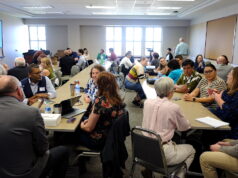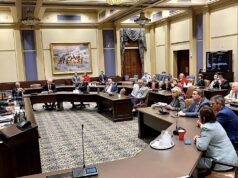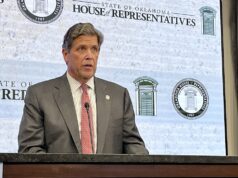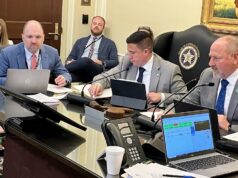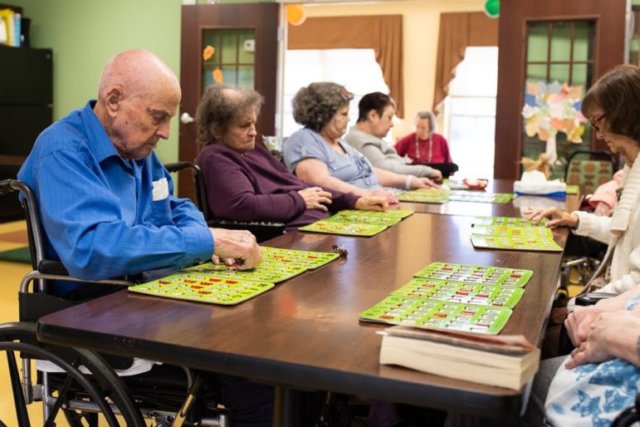

(Editor’s note: This story was authored by Paul Monies of Oklahoma Watch and appears here in accordance with the non-profit journalism organization’s republishing terms.)
Pauls Valley saw its hospital close last month because of financial troubles, but that isn’t stopping the city from holding on to 28 nursing homes that only two months ago it said it acquired to save its only hospital.
Instead of benefiting the hospital, city and nursing home officials say, Pauls Valley hopes to unlock millions of dollars in federal funds to improve the overall quality of health care in the community. Specific ideas for spending the funds, if federal officials approve the arrangement, are being bandied about, but nothing has been decided. Among the ideas are a better ambulance service and a new urgent-care clinic.
Detractors say the proposal is being driven more by the desire of nursing home operators to increase their profits. Those operators previously held the licenses for the nursing homes, located across the state, before the city took over ownership. A decision by the Centers for Medicare and Medicaid Services is expected by mid-January.
Pauls Valley’s acquisition of nursing homes reflects rural communities’ sometimes desperate efforts to shore up local health-care providers whose reimbursements under Medicaid have not kept pace with costs. Rural providers often treat larger shares of patients who are old and poor.
In Pauls Valley’s case, 10 of the city’s 28 nursing homes have applied under the Oklahoma Health Care Authority’s nursing facility upper payment-limit program, which would allow qualifying nursing homes paid under Medicaid funds to get the higher Medicare reimbursement rate. At stake is millions in additional payments to nursing home operators, with cities in the program getting up to 40 percent of the bonus payments if they put up tax money to attract the extra federal dollars.
The state’s latest application with the Centers for Medicare and Medicaid Services for the program is awaiting approval after officials and stakeholders answered a lengthy list of questions from federal regulators.
In all, small cities in Oklahoma hold the licenses for 46 nursing homes across the state, part of a transition of ownership and licenses that took hold after consultants first proposed the state’s participation in the upper payment limit program in 2014. The federal government rejected the state’s first application under the program in July 2017.
“The UPL (upper payment limit) program gives you access to new federal dollars for the benefit of quality,” said Eddie Parades, senior vice president with Stonegate Senior Living and one of the architects of the program. “The nice side benefit is these cities and rural hospitals, they can benefit. Nobody is getting rich. In the unlikely event we lose round two, we hope that the state has an appetite for round three.”
Pauls Valley’s total of 28 nursing home licenses is highest in the state; Hugo has licenses for 12 nursing homes. Other small cities with licenses include Frederick, Medford and Vici, according to license information filed with the Oklahoma State Department of Health. Some of nursing homes are hundreds of miles away from the cities that hold the licenses, leading critics to question how cities will oversee complex health-care operations.
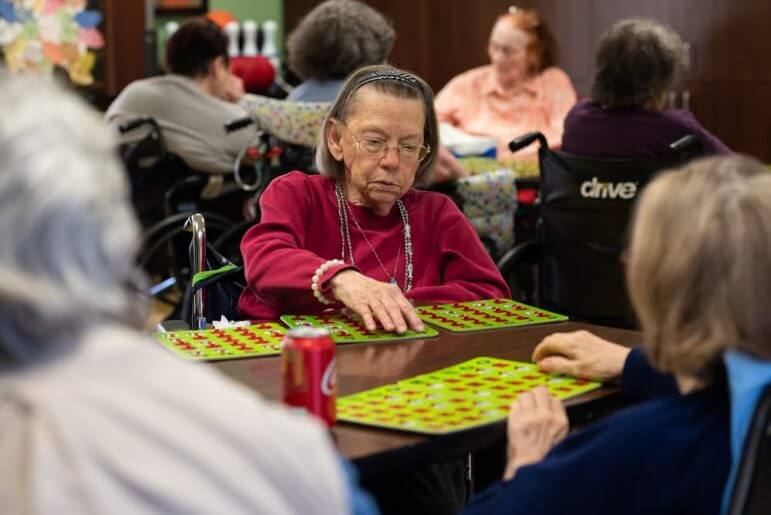
Stonegate manages nine of the nursing homes owned by Pauls Valley. Parades said Oklahoma’s Medicaid reimbursement rate for nursing homes is among the lowest in the nation. The state recently increased the daily rate to about $150. The nationwide Medicaid average daily rate is $195. If the upper payment limit program is approved, qualifying nursing homes could get reimbursed at the Oklahoma Medicare rate, which can average about $275 per day.
Parades said Oklahoma’s program is modeled after one in Texas. Nursing homes in the Oklahoma program have to improve on four of the 21 federal nursing home quality measures in order to get the bonus payments. Officials settled on four measures in which the state ranks lower than the national average: falls, pressure ulcers, use of antipsychotic medications, and restraints. Nursing homes have to show quarterly improvements in order to the get money.
“It is pay for performance,” Parades said. “Some people think it’s a get-rich-quick scheme and there’s millions in benefits, but you know who benefits? The patient. We have to prove quality improvement to earn it.”
If approved, an extra $7.7 million in Medicaid funds could go to nursing homes in the current federal fiscal year, with another $18.5 million projected for next year.
Eleven states have done similar upper payment limit programs for their nursing homes, and three other states are applying. Because of the paperwork and regulatory hurdles involved, Parades said it only makes sense for states with low Medicaid reimbursement rates to enter the program.
Pauls Valley Regional Medical Center closed Oct. 12, with the loss of 130 jobs, after months of financial troubles and amid a dispute with a former hospital management company. City officials had hoped to use bonus money from the nursing home payment program to keep the hospital open.
James Frizell, Pauls Valley’s city manager, said the city is still interested in pursuing the program despite the hospital’s closure.
“If it gets approved, it will be a great program for our state,” Frizell said in an email. “The program is 100-percent quality driven, where facilities will have to demonstrate improvement to earn additional funding. We remain excited about the program, and we’re hopeful CMS will approve it, like they have in other states.”
It’s unclear how Pauls Valley would spend the bonus money if the program is put in place. But Parades said participating cities would be limited to spending it on health programs. They couldn’t use the bonus money for just any city purpose, he said.
“The feds say when you get this money, you have to use it for the benefit of health care-related matters to Medicaid patients,” Parades said. “I’ve talked to some of the city managers and they’re throwing out ideas. For example, they could beef up their ambulance service. What if (Pauls Valley) did an acute clinic that was like an urgent care sort of clinic? They are looking at using the UPL (upper payment limit) money for the solution for their regional health-care problem with a (now) closed hospital.”
Detractors, however, said the upper payment limit program is an elaborate way to boost the profits of the former owners, now the managers, of the nursing homes that have applied.
Wes Bledsoe, who runs a patient advocacy group called A Perfect Cause, said the program sets up multiple layers of managers, each of which takes a cut of the enhanced payments.
“What are these cities bringing to the table to improve or provide care for patients and residents in any of those nursing homes?” Bledsoe said. “If others are responsible, why are these cities even involved? That money is supposed to pay for care, not some other function the city concocts.”
Parades said those concerns are overblown and the cities are already establishing a good track record.
“These cities have owned these nursing homes for 18 months,” Parades said. “Guess what? Not one of them have lost their license. Not one of them has had significant fines that aren’t beyond the normal business as usual. A patient, a client and an employee wouldn’t know any difference.”









